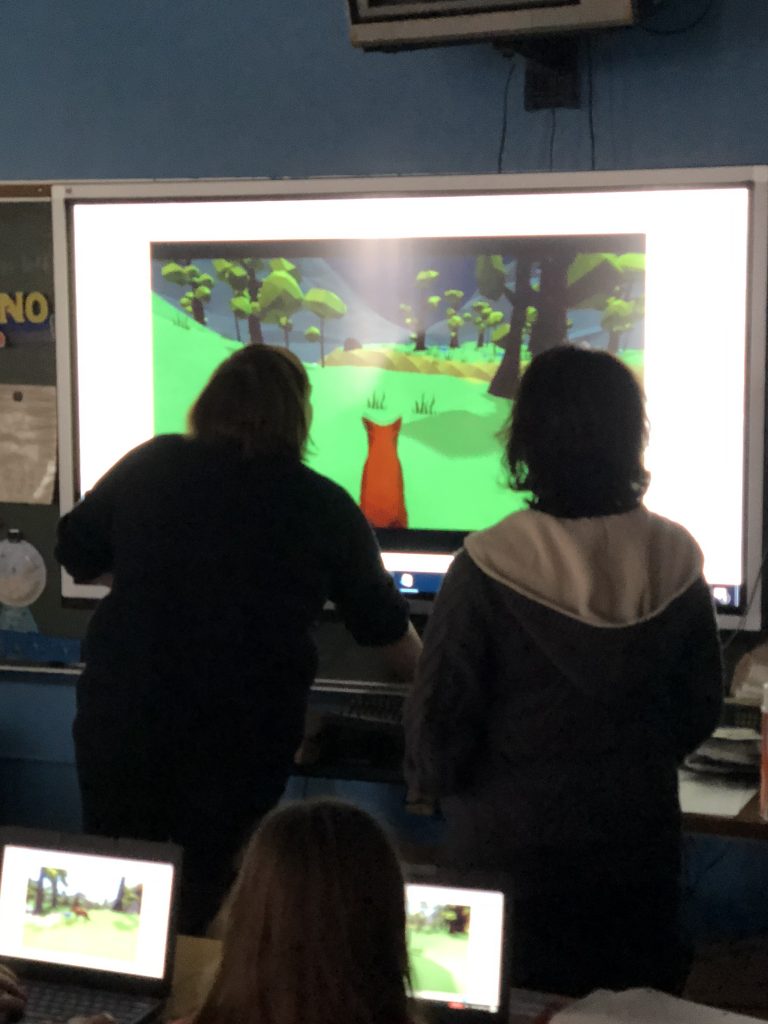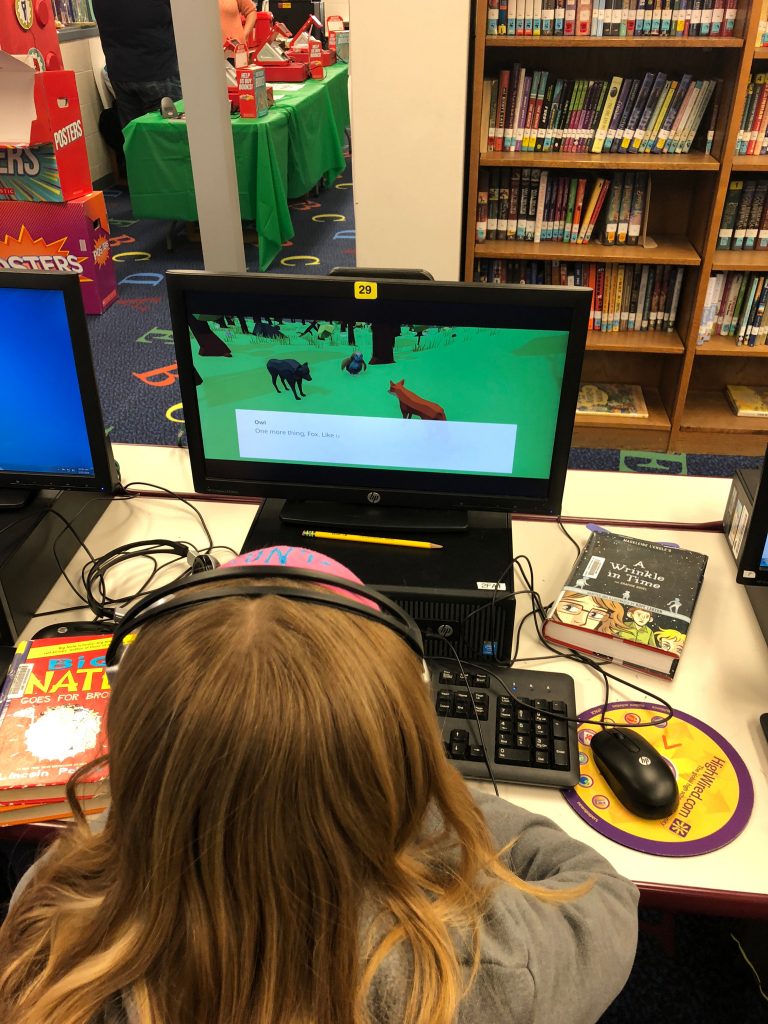
While 3/5 of our team was out west at the annual Game Developers Conference in San Francisco, the other 2/5 took our progress thus far and brought it to the people—namely, the children who will actually be playing this game when it’s all done.
Pictured above is the 4th grade class at Beech Bottom Primary, who played through the partial fruit of our labor for the first time. The initial reactions were generally positive; our earlier focus group sessions paid off as the children responded favorably to the art-style and forest setting. They loved the sounds of the forest and liked the peaceful music, and mostly understood the concept of the fox “letting off steam” during periods of intense sensory overload.
There is some tweaking to be done with the sensory overload, however, as the children reported that the sound distortion was too unpleasant to tolerate and the visual distortions occurred too frequently. It’s an interesting problem to solve, because the unpleasantness is baked into our design. Where is the line between “useful” unpleasant that will be explained and understood during the post-game facilitated discussion and the kind of unpleasant that makes players want to abandon the game completely? As we tested, we found ourselves having to resist the urge to shout out things like “it’s good that you don’t like this part, that’s exactly why it’s there! All will be revealed!” Instead we nodded consolingly and jotted down their experiences in our notes.
It was also difficult for our players to figure out how to navigate the world and it’s easy to simply become lost in the environment. While we want to encourage an exploratory feel (it was one of the reasons we chose a 3D “open world”), it’s important that players know how to get to the next objective when they’re ready. To that end, we are considering ways to implement a guidance system, either through on-screen directions/markers or perhaps even through an in-world character telling the Fox where it’s supposed to go next.
Also a problem: too much text? We noticed that some children were skipping past the intro dialogue in order to get to the gameplay more quickly. This presents a problem, because the context for understanding what’s happening to the fox during the daytime is lost if the text isn’t read. Making the dialogue unskippable seems too punishing, so a likely solution would be to add voice acting for the characters, which may prove to be more engaging for the players. Capturing the right voices (on our budget and timetable) to bring the animals to life seems challenging, however, and carries a significant risk of being too corny or off-putting. Much of the game’s charm right now is derived from its aesthetics, and voices are certainly going to change things up one way or the other.

Finally, there are assorted issues like this that need to be dealt with:
Thanks for reading, and we’ll see you next week after we present our work to the ETC faculty and students!
